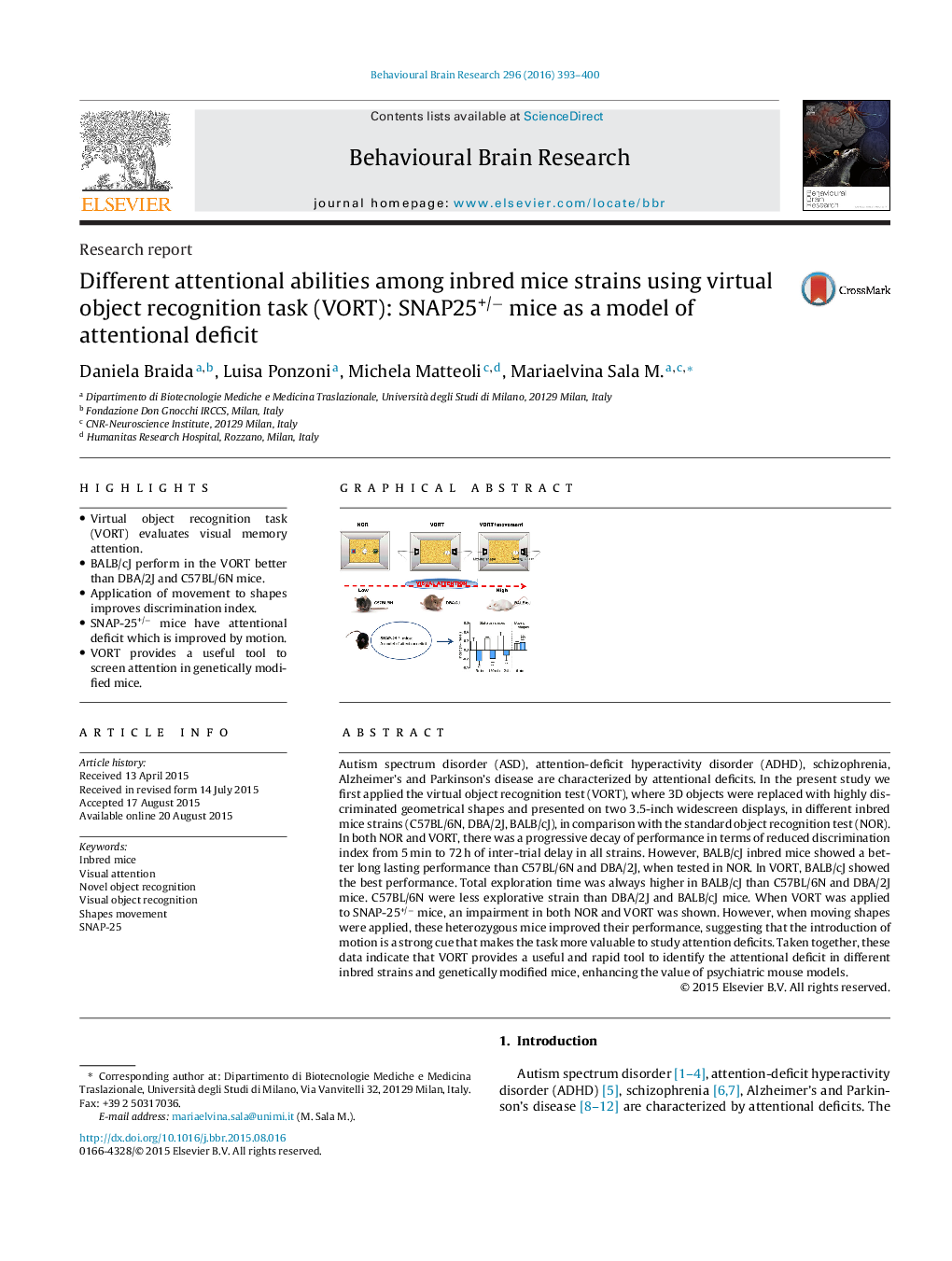| Article ID | Journal | Published Year | Pages | File Type |
|---|---|---|---|---|
| 4312349 | Behavioural Brain Research | 2016 | 8 Pages |
•Virtual object recognition task (VORT) evaluates visual memory attention.•BALB/cJ perform in the VORT better than DBA/2J and C57BL/6N mice.•Application of movement to shapes improves discrimination index.•SNAP-25+/− mice have attentional deficit which is improved by motion.•VORT provides a useful tool to screen attention in genetically modified mice.
Autism spectrum disorder (ASD), attention-deficit hyperactivity disorder (ADHD), schizophrenia, Alzheimer’s and Parkinson’s disease are characterized by attentional deficits. In the present study we first applied the virtual object recognition test (VORT), where 3D objects were replaced with highly discriminated geometrical shapes and presented on two 3.5-inch widescreen displays, in different inbred mice strains (C57BL/6N, DBA/2J, BALB/cJ), in comparison with the standard object recognition test (NOR). In both NOR and VORT, there was a progressive decay of performance in terms of reduced discrimination index from 5 min to 72 h of inter-trial delay in all strains. However, BALB/cJ inbred mice showed a better long lasting performance than C57BL/6N and DBA/2J, when tested in NOR. In VORT, BALB/cJ showed the best performance. Total exploration time was always higher in BALB/cJ than C57BL/6N and DBA/2J mice. C57BL/6N were less explorative strain than DBA/2J and BALB/cJ mice. When VORT was applied to SNAP-25+/− mice, an impairment in both NOR and VORT was shown. However, when moving shapes were applied, these heterozygous mice improved their performance, suggesting that the introduction of motion is a strong cue that makes the task more valuable to study attention deficits. Taken together, these data indicate that VORT provides a useful and rapid tool to identify the attentional deficit in different inbred strains and genetically modified mice, enhancing the value of psychiatric mouse models.
Graphical abstractFigure optionsDownload full-size imageDownload high-quality image (157 K)Download as PowerPoint slide
